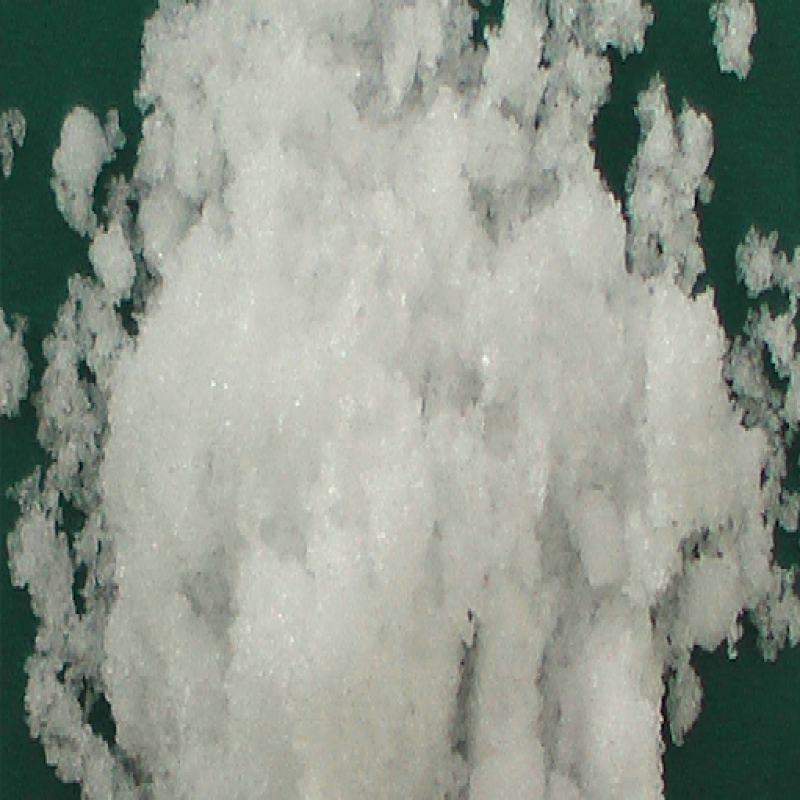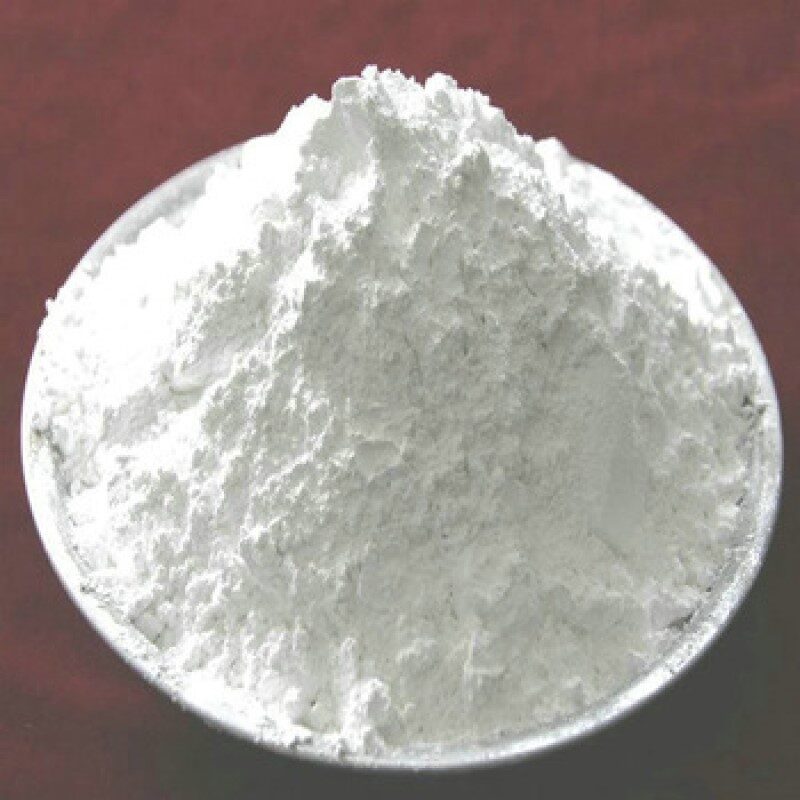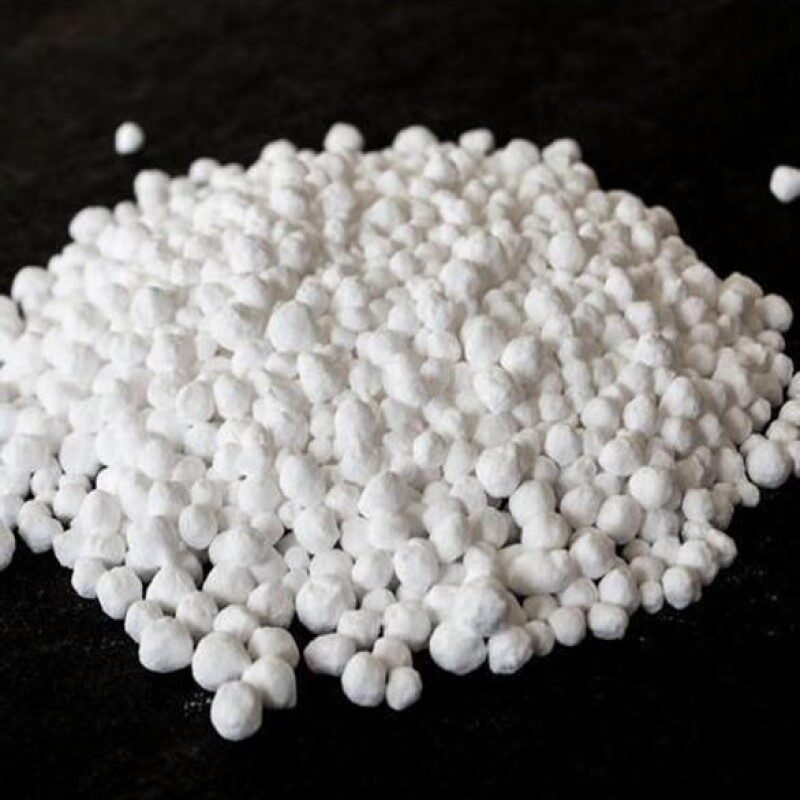Description
Remarks: The material complies as per above specification.
Uses: Aluminum chloride topical is an over-the-counter (OTC) product used to treat severe, recalcitrant excessive sweating (hyperhidrosis). Aluminum chloride hexahydrate is an antiperspirant that works by affecting the cells that produce sweat. Aluminum chloride hexahydrate topical (for the skin) is used to treat excessive sweating, also called hyperhidrosis.
Packing: 25 kg HDPE Bags/HDPE Drum.
For AMIZARA SPECILITY CHEMICALS LLP
Aluminium Chloride Hexahydrate FAQs
1. What are the advantages of using Aluminium Chloride Hexahydrate supplied by Amizara Speciality Chemicals?
Amizara Speciality Chemicals’ Aluminium Chloride Hexahydrate offers high purity, solubility, and versatility, making it suitable for a wide range of industrial applications such as water treatment and chemical synthesis.
2. How does the solubility of Aluminium Chloride Hexahydrate from Amizara Speciality Chemicals impact its performance in different processes?
The superior solubility of our Aluminium Chloride Hexahydrate ensures rapid dissolution and effective utilization in various applications, enhancing efficiency and process control
3. Does Amizara Speciality Chemicals provide customized formulations or packaging options for Aluminium Chloride Hexahydrate?
Yes, we offer tailored solutions to meet specific customer requirements, including custom formulations, packaging sizes, and labeling options for Aluminium Chloride Hexahydrate.
4. What measures does Amizara Speciality Chemicals take to ensure the quality and purity of its Aluminium Chloride Hexahydrate product?
Our Aluminium Chloride Hexahydrate undergoes stringent quality control procedures, including testing for purity, consistency, and compliance with relevant industry standards, to deliver superior performance and reliability.
MSDS
Aluminum Chloride Hexahydrate or Aluminium Chloride Hexahydrate MSDS Sheet, Material Safety Data Sheet
Section 1:Product Identification
| Product Name & Other Names |
Aluminum Chloride Hexahydrate or Aluminium Chloride Hexahydrate or Aluminum trichloride hexahydrate; Trichloro aluminum hexahydrate |
| CAS # |
7784-13-6 |
| EINECS: EC Number |
231-208-1 |
| Molecular Weight |
241.43 |
| Recommended usage |
Industrial Manufacturing. |
| Suppliers |
As per letterhead. |
SECTION 2 : Hazards Identification
GHS, Globally Harmonized System Classification in accordance with 29 CFR 1910 Classification according to Regulation (EC) No 1272/2008
| Acute toxicity, Oral |
(Category 5) |
| Skin corrosion/irritation |
(Category 2) |
| Serious eye damage/eye irritation |
(Category 2A) |
| Specific target organ toxicity – single exposure |
(Category 3) |
| Acute aquatic toxicity |
(Category 3) |
Labeling according to GHS & Regulation (EC) No 1272/2008
Hazard statements
| H303 |
May be harmful if swallowed. |
| H315 |
Causes skin irritation. |
| H319 |
Causes serious eye irritation. |
| H335 |
May cause respiratory irritation. |
| H402 |
Harmful to aquatic life. |
Precautionary statements:
| P261 |
Avoid breathing dust/ fume/ gas/ mist/ vapors/ spray. |
| P262 |
Do not get in eyes, on skin, or on clothing. |
| P264 |
Wash skin thoroughly after handling. |
| P273 |
Avoid release to the environment. |
| P280 |
Wear protective gloves/protective clothing/eye protection/face protection. |
| P301+P330 + P331 IF SWALLOWED |
rinse mouth. Do NOT induce vomiting. |
| P302+P352 IF ON SKIN |
Wash with plenty of soap and water.. |
| P304 + P340 IF INHALED |
Remove person to fresh air and keep comfortable for
breathing. |
| P305+P351+P338: IF IN EYES: |
Rinse cautiously with water for several minutes.
Remove contact lenses, if present and easy to do. Continue rinsing. |
| P332+313: If skin irritation occurs: |
Get medical advice/attention. |
| P314 |
Get Medical advice/attention if you feel unwell. |
| P337+P313: If eye irritation persists |
Get medical advice/ attention. |
| P362 |
Take off contaminated clothing and wash before reuse. |
| P501 |
Dispose of contents/ container to an approved waste disposal plant. |
Classification according to EU Directives 67/548/EEC or 1999/45/EC:
Hazard Symbols:
Section 3: Composition / Information on Ingredients
| Product Name & Other Names |
Aluminum Chloride Hexahydrate or Aluminium Chloride Hexahydrate or Aluminum trichloride hexahydrate; Trichloro aluminum hexahydrate |
| CAS #: |
7784-13-6 |
| EINECS: EC Number |
231-208-1 |
| Percent |
almost 100% |
SECTION 4: First Aid Measures
Always seek medical attention after first aid measures are provided.
| Inhalation |
Remove to fresh air. If not breathing, give artificial respiration. If
breathing is difficult, give oxygen. Get medical attention. |
| Ingestion |
Never give anything by mouth to an unconscious person. Get medical attention. |
| Skin Contact |
Wipe off excess material from skin then immediately flush skin with plenty of water for at least 15 minutes. Remove contaminated clothing and shoes. Get medical attention. Wash clothing before reuse. Thoroughly clean shoes before reuse. |
| Eye Contact |
Immediately flush eyes with plenty of water for at least 15 minutes, lifting lower and upper eyelids occasionally. Get medical attention immediately. |
| Note to Physician |
Treat symptomatically. |
SECTION 5 :Fire Fighting Measures
| Flammability of the Product: |
The product is not flammable. |
| Flammable Limits |
NA |
| Products of Combustion |
It forms oxides of aluminum and hydrochloric acid when heated to decomposition. |
| Fire |
Non flammable. |
| Explosion |
not known. |
| Fire Extinguishing Media |
Use water spray, dry chemical, foam, or carbon dioxide. |
| Special Information |
In the event of a fire, wear full protective clothing and NIOSH-approved self-contained breathing apparatus with full face piece operated in the pressure demand or other positive pressure mode. At high temperatures or when moistened under fire conditions, it may produce toxic or irritating fumes. |
SECTION 6: Accidental Release Measures
Methods and materials used for containment Cleanup procedures and Storage:
| Personal precautions, protective equipment, and emergency procedures |
Ventilate area of leak or spill. Avoid breathing dust/fumes/gas/mist/vapors/spray. Use individual protective equipment (waterproof boots, suitable protective clothing, safety glasses, etc.). Restrict unprotected personnel from the area. Prevent any contact with hot surfaces. Do not approach facing the wind. Do not touch the spilled material. |
| Environmental precautions |
Do not let the product enter drains, soil, or water sources. |
| Small Spill |
Avoid dust formation. Avoid breathing dust. Ensure adequate ventilation. Use appropriate tools to put the spilled solid in a convenient waste disposal container. Finish cleaning by spreading water on the contaminated surface and dispose of
according to legal requirements. |
| Large Spill |
Contain spilled material. Cover with an inert, non-combustible absorbent material, (e.g. sand, earth, diatomaceous earth, vermiculite). Vacuum or sweep-up and remove to an approved disposal container. Finish cleaning by spreading water on the contaminated surface and dispose of according to legal requirements. |
SECTION 7:Handling and Storage
| Precautions for safe handling |
Apply according to good manufacturing and industrial hygiene practices. Ensure proper ventilation. In case of insufficient ventilation, wear suitable respiratory equipment. Wash thoroughly after handling. Do not drink, eat, or smoke while handling. Avoid contact with skin, eyes, and clothing. Minimize dust
generation. Avoid breathing dust/fumes/gas/mist/vapors/spray. Avoid contact with eyes, skin, and clothing. Keep container tightly closed. Avoid ingestion and inhalation. Avoid formation of dust and aerosols. Use individual protective equipment (waterproof boots, suitable protective clothing, safety glasses, etc.). Prevent any contact with hot surfaces. |
| Conditions for safe storage, including any incompatibilities |
Store in cool, dry, and ventilated area away from heat sources and protected from sunlight in tightly closed original container. Keep air contact to a minimum. Store protected from heat, sparks and ignition sources and incompatible materials. Avoid contact with skin and eyes.
Avoid inhalation of dust/mist/vapor. Do not store with incompatible materials like strong oxidizing agents, alkalis, and moisture. |
SECTION 8: Exposure Controls/Personal Protection
| Airborne Exposure Limits |
None established. Assure it as below 2mg/m3. Ventilation System: A system of local and/or general exhaust is recommended to keep employee exposures as low as possible. Local exhaust ventilation is generally preferred because it can control the emissions of the contaminant at its source, preventing dispersion of it into the general work area. Personal Respirators (NIOSH Approved): For conditions of use where exposure to dust or mist is apparent and engineering controls are not feasible, a particulate respirator may be worn. For emergencies or instances where the exposure levels are not known, use a full-face positive-pressure, air-supplied respirator. |
| Skin Protection |
Wear protective gloves and clean body-covering clothing. |
| Eye Protection |
Use chemical safety goggles and/or full face shield where dusting or splashing of solutions is possible. Maintain eye wash fountain and quick-drench facilities in work area. |
| Other Control Measures |
Maintain good housekeeping in work area. Dust deposits on floors and other surfaces may pick up moisture and cause the surfaces to become slippery and present safety hazards. Handle in accordance with good industrial hygiene and safety practice. Wash hands after handling. |
SECTION 9: Physical and Chemical Properties
| Appearance |
Crystals or powder or granules. |
| Odor |
Mild typical. |
| Odor threshold |
Not available. |
| pH |
Not available. |
| Relative density |
around 2.4 |
| Melting Point |
100C |
| Initial boiling point and boiling range |
Not available. |
| Flash point |
Not available. |
| Auto-ignition temperature |
Not available. |
| Decomposition temperature |
Not available. |
| Upper/lower flammability or explosive limits |
Not available. |
| Vapor pressure |
Not available |
| Vapor density |
Not available. |
| Evaporation rate |
Not available. |
| Flammability (solid, gas) |
Not available. |
| Partition coefficient |
n-octanol/water:
Not available. |
| Solubility(ies) |
Readily soluble in water. |
| Viscosity |
Not available. |
| Molecular Weight |
241.43 |
| Molecular Formula |
AlCl3-6H2O |
SECTION 10. Stability and Reactivity
| Stability |
Stable under ordinary conditions of use and storage. It must be kept in air tight containers. |
| Hazardous Decomposition Products |
It produces oxides of aluminum along with hydrochloric acid when heated to decomposition. |
| Hazardous Polymerization |
Will not occur. |
| Incompatibilities |
Incompatible with water including moisture, oxidizing material and alkalis. |
| Conditions to Avoid |
Moisture, Heat, Sun light, Incompatibles. |
SECTION 11. Toxicological Information
Toxicity to Animals
| Oral, mouse: |
LD50 =1990 mg/kg; |
| Oral, rat |
LD50 = 3311 mg/kg; |
| Carcinogenicity Effects |
Not a reported carcinogen. |
| Mutagenic Effects |
Not available. |
| Teratogenic Effects |
Not available. |
| Developmental Toxicity |
Not available. |
SECTION 12. Ecological Information
| Toxicity to fish |
LC50 – fish – 27.1 mg/l – 96 h |
| Toxicity to daphnia and other aquatic invertebrates |
EC50 – Daphnia magna (Water
flea) – 27.3 mg/l – 48 h |
| BOD5 and COD |
Not available. |
| Persistence and Degradability |
No information available. |
| Mobility |
No information available. |
| Bioaccumulation/ Accumulation |
No information available. |
| Results of PBT and vPvB assessment |
No data available for assessment. |
SECTION 13. Disposal Considerations
Whatever cannot be saved for recovery or recycling should be managed in an appropriate and approved waste disposal facility. Processing use or contamination of this product may change the waste management options. State and local disposal regulations may differ from federal disposal regulations. Dispose of container and unused Aluminum chloride Hexahydrate in accordance with federal, state, and local requirements.
SECTION 14. Transport Information
| DOT (US) & ADR/RID |
Not Regulated |
| IMDG |
Not Regulated. |
| IATA |
Not Regulated. |
SECTION 15. Regulatory Information
USA :
| OSHA Hazards |
Irritant |
| SARA 302 |
No chemicals in this material are subject to the reporting requirements of
SARA Title III, Section 302. |
| Section 313 |
This material contains Aluminum chloride hexahydrate (listed as ** undefined **), 100%, (CAS# 7784-13-6) which is subject to the reporting requirements of Section 313 of SARA Title III and 40 CFR Part 373. SARA 311/312 |
| Hazards: |
Acute Health Hazard. |
| California Prop 65 |
This product does not contain any chemicals known to State of
California to cause cancer, birth defects, or any other reproductive harm. |
SECTION 16. Other Information
European Labeling in Accordance with EC Directives
| H303 |
May be harmful if swallowed. |
| H315 |
Causes skin irritation. |
| H319 |
Causes serious eye irritation. |
| H335 |
May cause respiratory irritation. |
| H402 |
Harmful to aquatic life. |
Classification according to EU Directives 67/548/EEC or 1999/45/EC
Hazard Symbols:
Risk Phrases
| R36/37/38 |
Irritating to eyes, respiratory system, and skin. |
| R52 |
Harmful to aquatic organisms. |
Disclaimer:
Our company provides this SDS sheet in good faith but makes no representation as to its comprehensiveness or accuracy. This SDS sheet is intended only as a guide to the appropriate precautionary handling of the material by a properly trained person using this product. The above information has been compiled from various sources and has the possibility of discrepancy and being out-dated information. Individuals receiving the information must exercise their independent judgment and do further search in determining its appropriateness for a particular purpose. In no case shall our company be liable to loss or damages by the product user.




